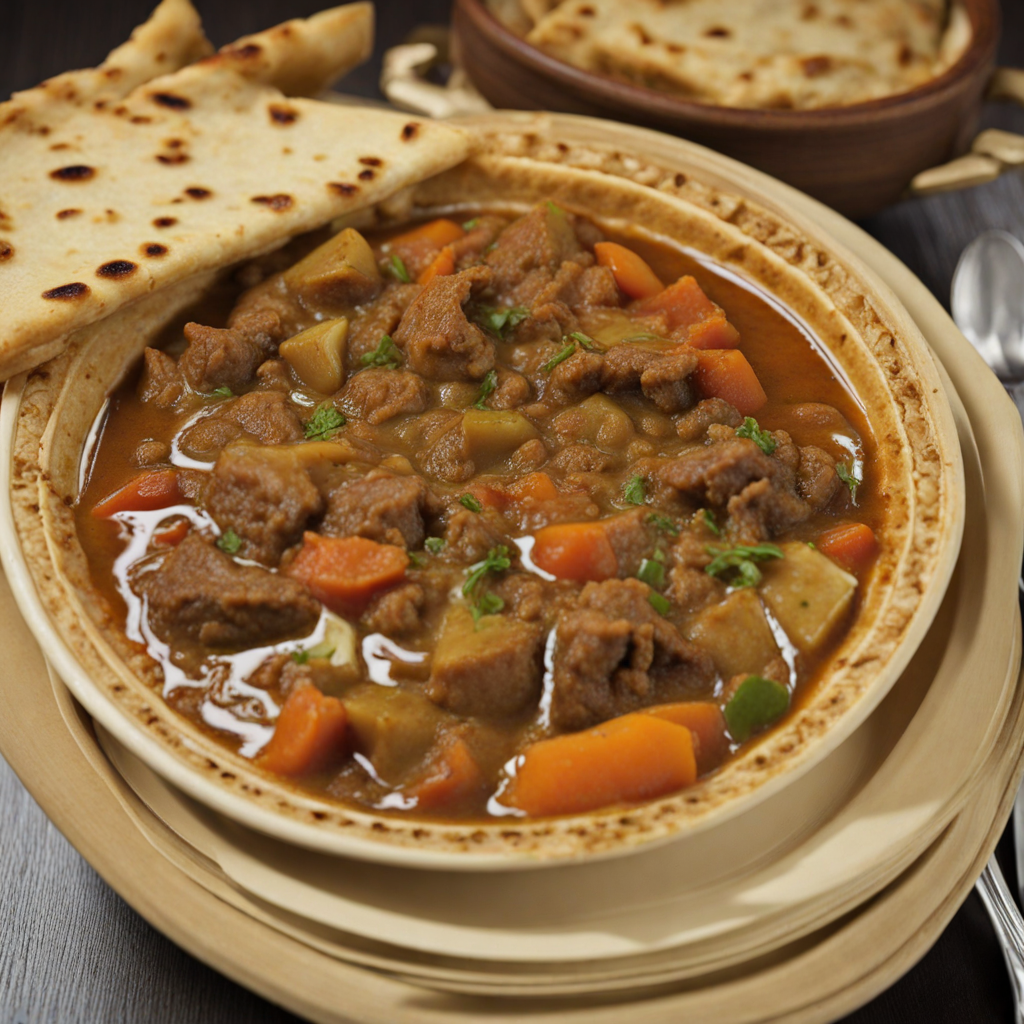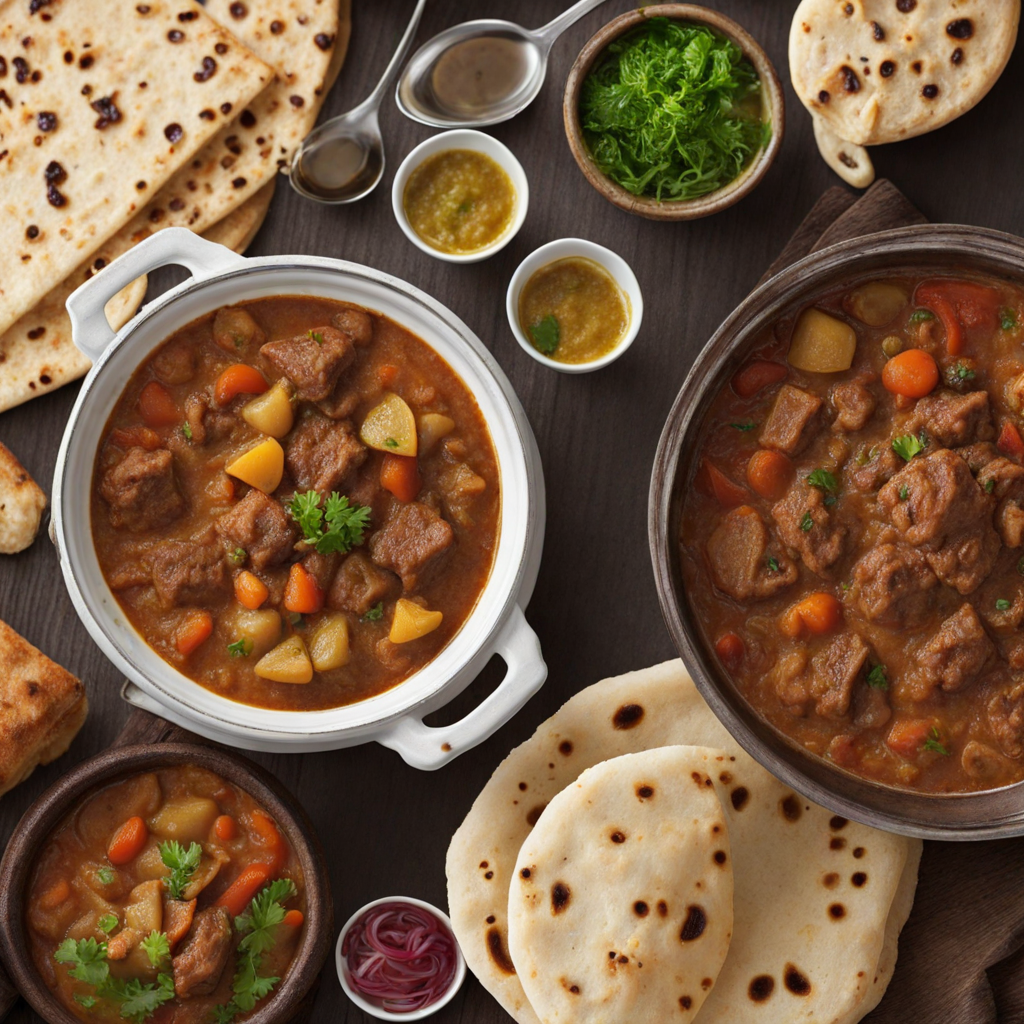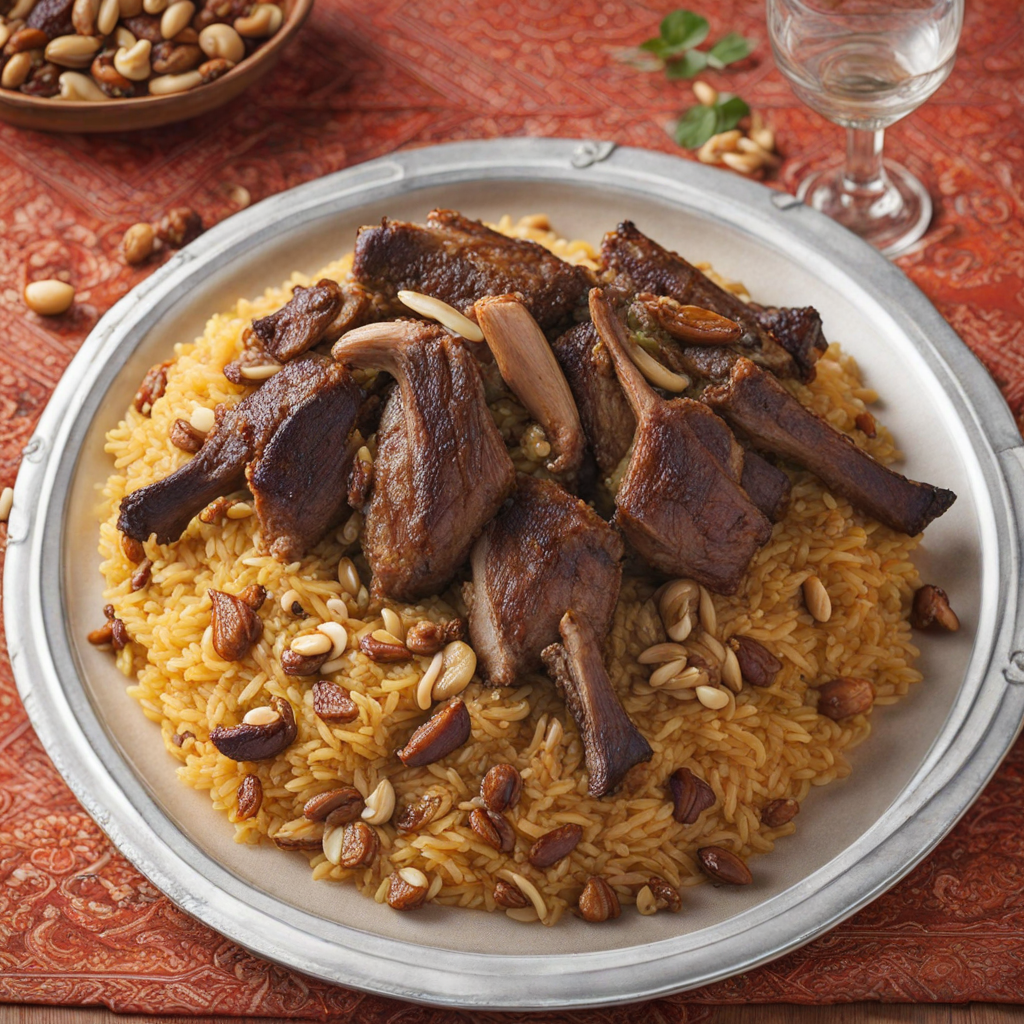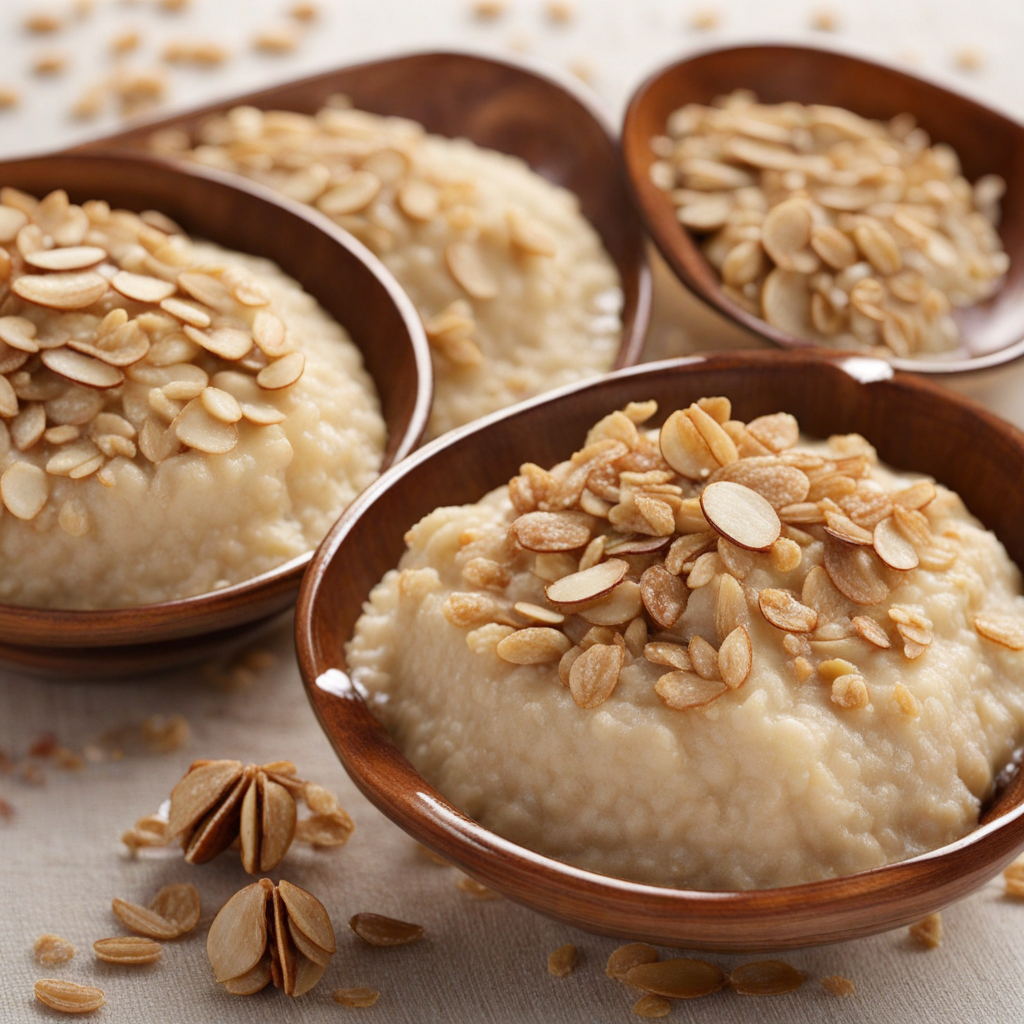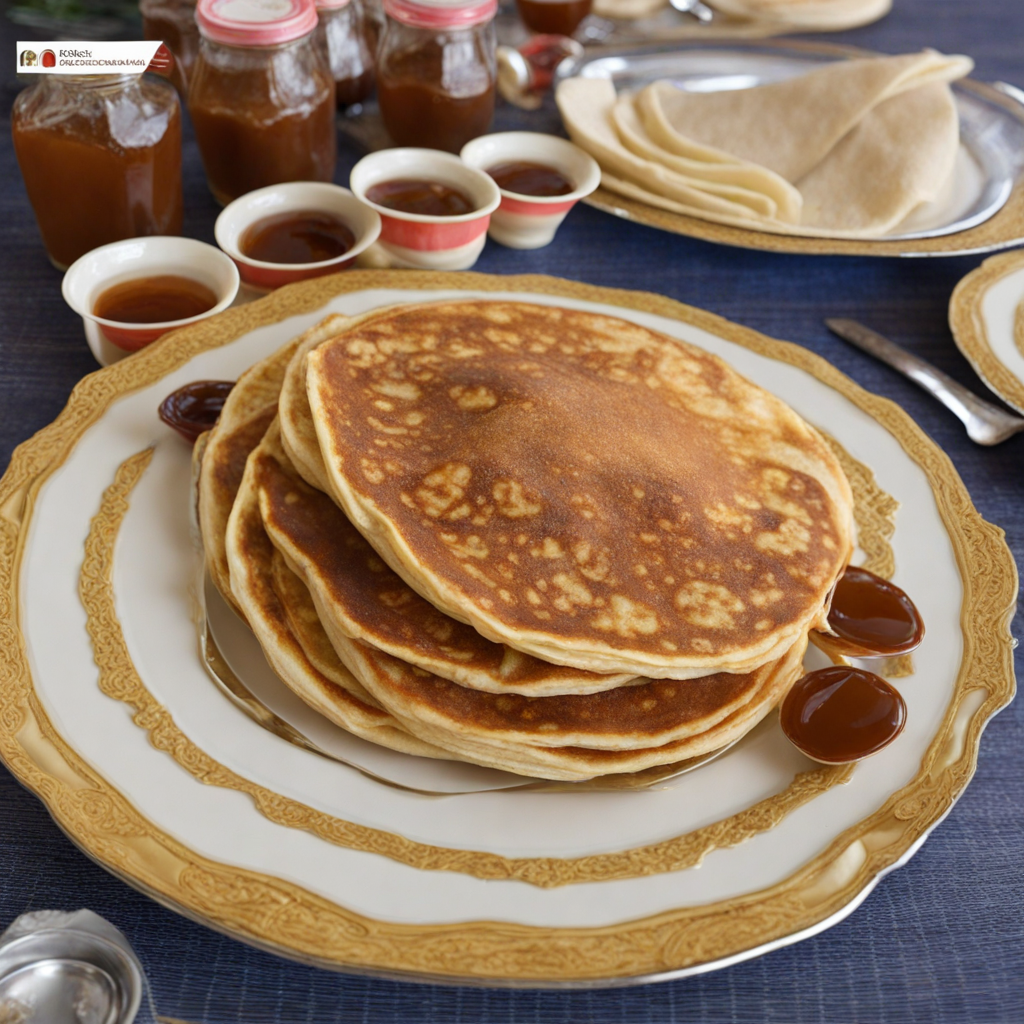Al Fareed
Al Fareed is a traditional Emirati dish that beautifully showcases the rich culinary heritage of the United Arab Emirates. This dish is primarily made from shredded flatbread, known as 'khameer,' which is typically layered with a savory stew. The stew often features tender pieces of meat, such as lamb or chicken, slow-cooked with a medley of aromatic spices, including cumin, coriander, and cardamom, creating a symphony of flavors that are comforting and deeply satisfying. The blend of spices not only enhances the meat but also infuses the bread with an irresistible savory essence, making each bite a delightful experience. One of the standout aspects of Al Fareed is its texture and presentation. The shredded bread absorbs the rich juices of the stew, resulting in a dish that is both hearty and fulfilling. Traditionally served in communal style, Al Fareed encourages sharing and celebrating togetherness, a core value in Emirati culture. The dish is often garnished with fresh herbs like cilantro or mint, adding a refreshing contrast to the warmth of the stew and enhancing its visual appeal. For those venturing into the realm of Al Fareed, it offers a unique exploration of flavors and aromas that reflect the essence of Emirati cuisine. The combination of tender meat, spiced broth, and soft, soaked bread creates a harmonious balance that is both nostalgic and inviting. Whether enjoyed at a family gathering or a festive occasion, Al Fareed is not just a meal but an experience that invites you to savor the rich traditions and flavors of the United Arab Emirates.
How It Became This Dish
The History of الفريد (Al Farid) in the United Arab Emirates #### Origins and Early History الفريد, or Al Farid, is a traditional dish that reflects the rich culinary heritage of the United Arab Emirates (UAE). The origins of Al Farid can be traced back to the Bedouin tribes that roamed the deserts of the Arabian Peninsula. The dish is deeply rooted in the nomadic lifestyle of these tribes, who relied on the resources available to them in their harsh environment. Historically, Al Farid was a dish that symbolized hospitality and community. It was often prepared during gatherings, celebrations, and significant life events such as weddings and religious festivals. The dish's name, which translates to "the unique" or "the special," underscores its significance in Emirati culture. Al Farid was not just sustenance; it was a means of bringing people together, sharing stories, and celebrating life. #### Ingredients and Preparation The traditional preparation of Al Farid involves a combination of ingredients that reflect the local environment. The primary components include meat (traditionally lamb or chicken), rice, spices, and sometimes vegetables. The meat is usually cooked with a blend of spices such as saffron, cardamom, and cinnamon, which are essential to Emirati cuisine. One of the unique aspects of Al Farid is the method of cooking. The meat is typically slow-cooked until tender, then layered with rice that has absorbed the flavorful broth. The dish is often garnished with fried onions or nuts, adding texture and flavor. This slow-cooking technique not only enhances the dish's taste but also aligns with the Bedouin tradition of cooking over an open flame, which was a practical necessity in the desert. #### Cultural Significance Al Farid holds a special place in Emirati culture, serving as a symbol of tradition, family, and hospitality. It is a dish that embodies the spirit of sharing, which is a fundamental value in Emirati society. When guests arrive, offering Al Farid is a way to show respect and appreciation, reinforcing social bonds. In the context of festivals and celebrations, Al Farid is often prepared in large quantities to accommodate gatherings of family and friends. During Eid al-Fitr and Eid al-Adha, for instance, the dish is frequently served as part of the festive meals, showcasing the abundance and generosity of the host. The act of sharing Al Farid during these occasions strengthens communal ties and fosters a sense of belonging among participants. #### Development Over Time As the UAE transitioned from a predominantly nomadic society to a modern, urban nation, the culinary landscape evolved, and so did Al Farid. With the discovery of oil in the mid-20th century and the subsequent economic boom, the UAE witnessed an influx of diverse culinary influences. While traditional dishes like Al Farid retained their cultural significance, they also began to adapt to the changing tastes and lifestyles of the population. In urban areas, Al Farid has been modernized to suit contemporary dining practices. Restaurants and catering services often offer the dish as part of a larger menu that incorporates both traditional and international cuisines. Despite these changes, the essence of Al Farid remains unchanged; it is still a dish that celebrates heritage and brings people together. Moreover, the rise of social media and food culture has further popularized Al Farid. Young Emiratis are increasingly showcasing traditional dishes on platforms like Instagram, highlighting their cultural significance and reinvigorating interest in culinary traditions. This digital renaissance has led to a resurgence of traditional cooking classes and culinary events, where the younger generation learns to prepare Al Farid alongside other traditional dishes. #### Modern Interpretations and Global Recognition In recent years, Al Farid has gained recognition beyond the borders of the UAE. As Emirati cuisine garners global attention, chefs and food enthusiasts have begun to explore and reinterpret traditional dishes, including Al Farid. Some chefs experiment with fusion elements, combining Al Farid with global culinary techniques or ingredients, thus creating new variations that appeal to a broader audience. This global interest has sparked a movement to preserve and promote Emirati culinary heritage, leading to initiatives aimed at documenting traditional recipes and practices. Cultural organizations and government bodies have also played a role in promoting Emirati cuisine on international platforms, showcasing dishes like Al Farid at food festivals and cultural exhibitions. #### The Future of Al Farid As the UAE continues to evolve, the future of Al Farid seems promising. With a growing emphasis on sustainability and local sourcing, there is a renewed interest in traditional cooking methods and ingredients. This trend not only preserves the authenticity of the dish but also aligns with global movements toward environmentally friendly practices. In addition, as Emirati society becomes increasingly cosmopolitan, the dialogue between tradition and modernity will likely continue to shape the future of Al Farid. The dish will remain a culinary emblem of the UAE, a reminder of the rich heritage of the past while simultaneously embracing the innovations of the future. #### Conclusion In summary, الفريد (Al Farid) is much more than just a dish; it is a cultural artifact that encapsulates the essence of Emirati identity. Its origins in the Bedouin lifestyle, cultural significance, and evolution over time reflect the broader narrative of the UAE itself—a nation rooted in tradition yet dynamically engaged with the modern world. As the UAE continues to grow and change, so too will Al Farid, ensuring its place in the hearts and homes of Emiratis for generations to come.
You may like
Discover local flavors from United Arab Emirates


